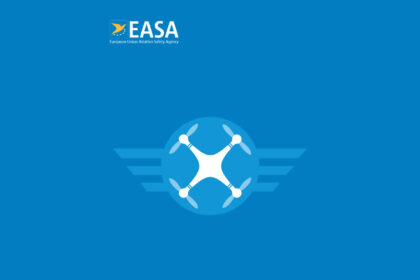What is flying beyond visual range all about? When is it allowed and when is it not and how exactly is visual range actually defined? We give you the answers.
Am I allowed to fly drones beyond visual range?
No, this is prohibited in the Open category. The only exceptions to this are in follow-me mode and when a UA observer (another person who always has the drone in view) is used (FPV flight).
Only in this special category can the full potential of the drone be utilised and pushed to the limits of what is (technically and regulatory) possible. See the article on the EU drone regulation.
As good as the technical possibilities may be, VLOS (i.e. flights within visual range) is currently the most effective method for minimising the air risk and having triggers for contingency and emergency procedures.
📝 Are you interested in flights in this special category?
As experts in the field of drone regulations, we offer you customised advice on all aspects of SORA. We will help you through the complex authorisation process for drone flights in the special category. Please contact us for a non-binding initial S ORA consultation.
How is the term visual range defined?
Article 4 (d) of the drone regulations states that the pilot in the Open category must have the UAS within visual range at all times – in my opinion the most important rule for drone pilots in the Open category.
But what does within visual range mean? Isn’t it enough if I can see the drone on my remote control flight display? Or as a small dot on the horizon?
No, the definition of “visual line of sight operation (VLOS)” in the drone regulations leaves no room for manoeuvre here.
- “Visual line of sight operation” (VLOS) means a UAS mode of operation in which the remote pilot is able to maintain uninterrupted and unassisted visual contact with the unmanned aircraft so that he can control its flight path in such a way as to avoid collisions with other aircraft, people and obstacles;
Article 2 (7) Regulation (EU) 2019/947
EASAThe key words are uninterrupted and unaided visual contact. This means that no (technical) aids may be used to establish a direct line of sight to the drone. Of course, looking at the remote control screen helps with orientation and situational awareness, but the pilot must have the drone in the corner of his eye in order to continue to control the flight path without collision.
You can see what purpose direct visual contact fulfils: it serves the purpose of safety in order to avoid air risks (collisions with other aircraft) and ground risks (collisions with people and obstacles).
This is why it is often used – where possible – to reduce the air risk in the specific category.
How far can I fly?
How do I know if I am still in direct line of sight?
As is often mistakenly assumed, there is no standardised value – it depends much more on the drone and the weather. The size and type of drone mainly determine how far you can see it.
The national aviation authority in Germany, the Luftfahrtbundesamt, has published a guideline value calculation that distinguishes between two distances:
- ALOS – Attitude line of sight or maximum distance at which the drone’s position can still be recognised
- DLOS – Detection line of sight or distance up to which other aircraft can be recognised in time
It can be calculated using the following formulae:

(CD stands for characteristic dimension of the drone,
e.g. wingspan for fixed-wing drones or the diagonal for multicopters)
Source: Guideline on the dimensioning of flight geography, contingency volume and ground risk buffer, Federal Aviation Office, No. 1.6 of 20 November 2023.
Depending on which distance is smaller, this is used as the visibility limit.

The best way to find out the ground visibility is via the METAR of a nearby airport or weather station.













